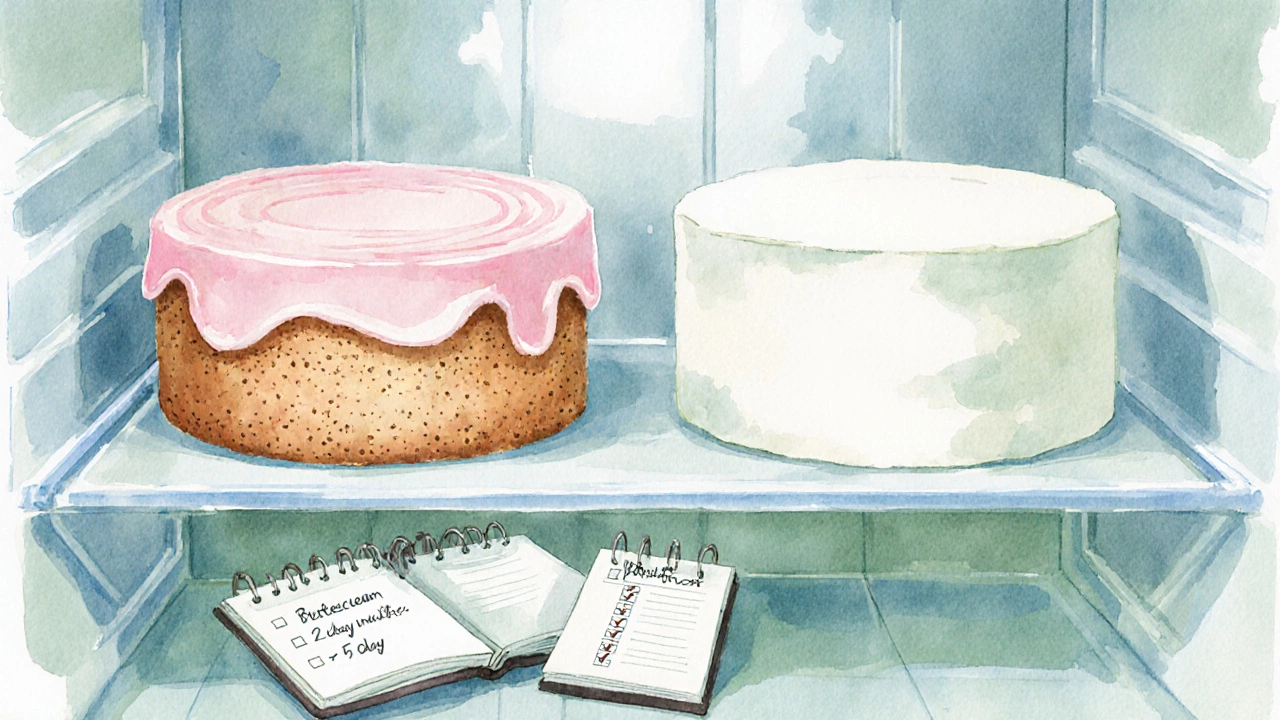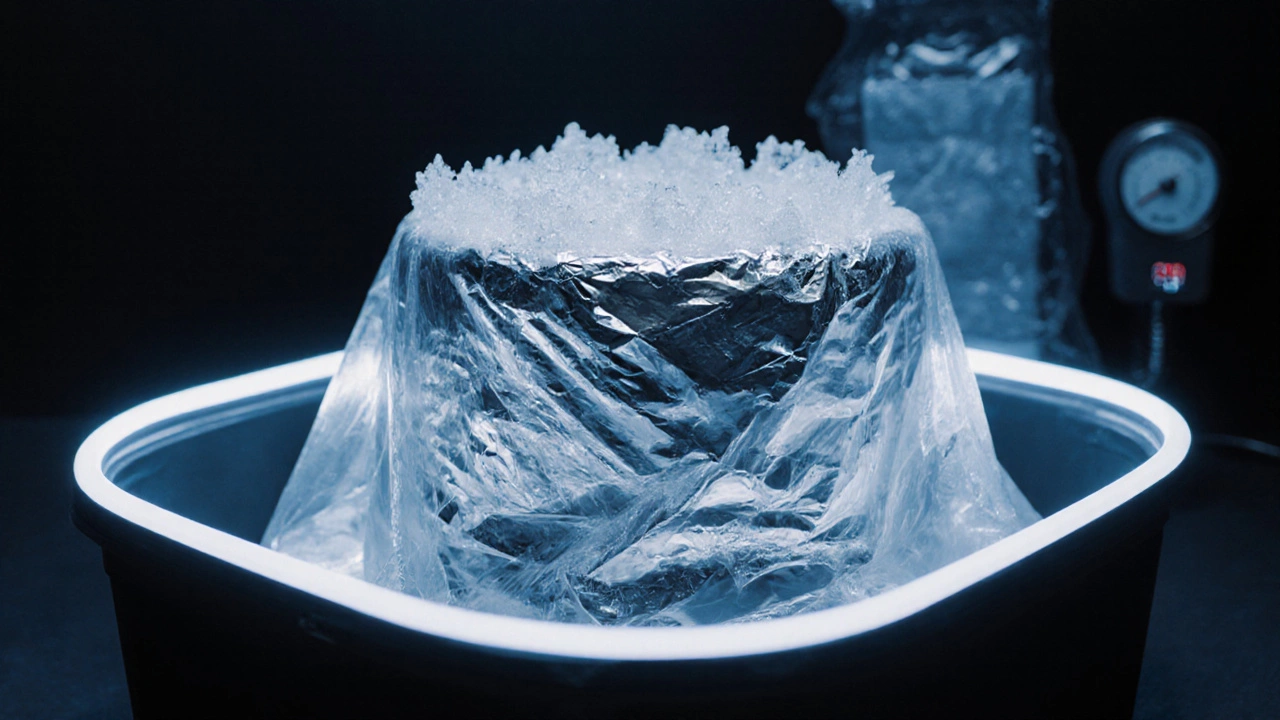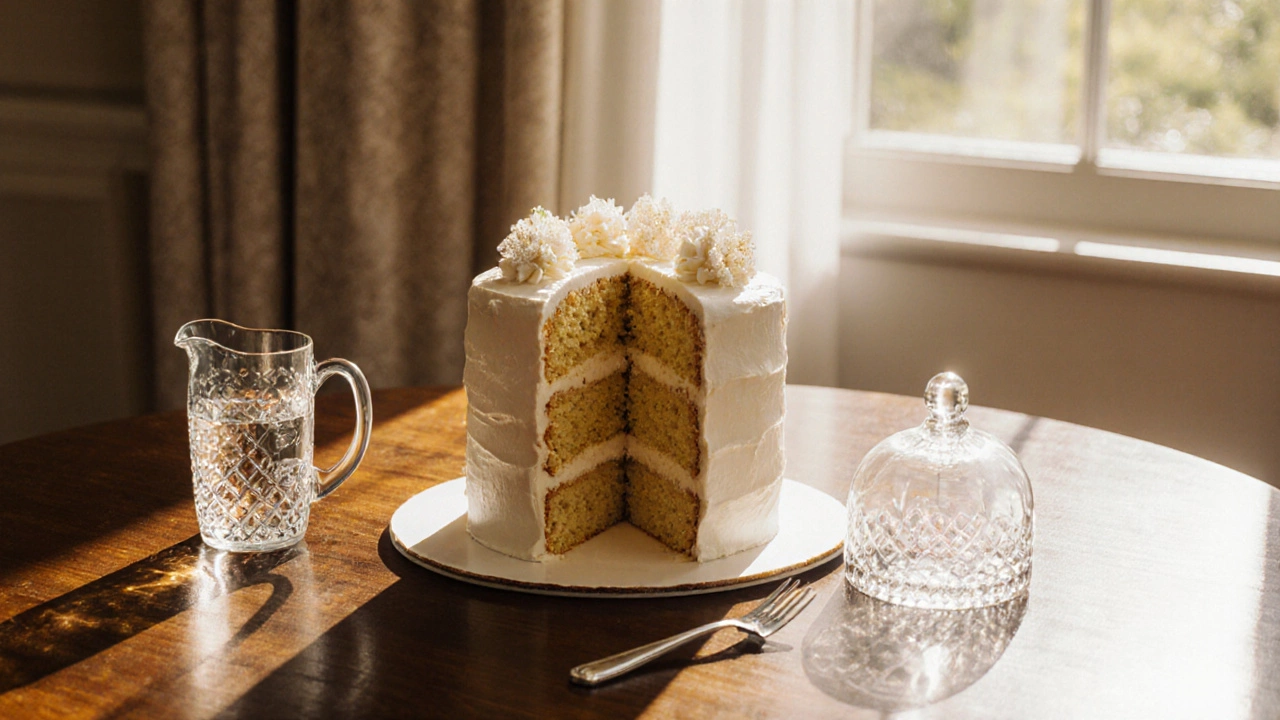Wedding Cake Freshness Calculator
Quick Takeaways
- Room‑temperature cake is safe for 2-4 hours after it’s cut.
- Refrigerated buttercream layers last 2 days; fondant‑covered cakes can stretch to 5 days.
- Freezing preserves a cake for up to 3 months with minimal texture loss.
- Store cakes in an airtight container, keep humidity low, and avoid direct sunlight.
- Look for sugar bloom, off‑colors, or sour smell as signs of spoilage.
Understanding What Affects wedding cake freshness
Wedding cake is a custom confection served at wedding receptions, often layered and decorated with icing, fondant, or buttercream. Its shelf life hinges on three big factors: the type of frosting, the storage temperature, and the surrounding humidity.
Buttercream is moisture‑rich, so it softens quickly at room temperature. Fondant creates a protective seal that slows drying, but it can still sweat in warm, humid rooms. Fresh fruits, fresh cream fillings, or dairy‑based fillings add another layer of perishability because they invite bacterial growth.
Room‑Temperature Limits
At a typical reception-around 20‑22 °C (68‑72 °F)-a sliced cake stays safe for about 2‑4 hours. That window is enough for the ceremony, photos, and the first round of servings. Beyond that, the frosting can begin to melt, and the crumb may dry out, especially if the venue is humid.
If you need the cake to sit longer, move it to a cooler spot. Many venues have a walk‑in refrigerator or a climate‑controlled pantry. Even a brief dip into a fridge can buy another hour or two of safety.
Refrigeration: Extending Freshness
Refrigerator storage is the go‑to method for most bakers once the cake is assembled. Set the temperature to 4 °C (39 °F) or lower.
- Buttercream‑covered cakes: 2 days. The butter in the frosting can become grainy after a day, but the cake remains safe to eat.
- Fondant‑covered cakes: up to 5 days. Fondant acts like a moisture barrier, so the cake stays moist longer.
- Fruit‑filled or whipped‑cream layers: 1 day only. Dairy fillings are the weakest link and should be consumed quickly.
Cover the cake loosely with a cake dome or a clean, dry kitchen towel. Avoid sealing it airtight while it’s still warm; condensation can cause soggy frosting.

Freezing for Long‑Term Storage
Freezer gives you the biggest extension. Most professional bakers freeze whole cakes or individual tiers for up to 3 months.
- Wrap each tier tightly in several layers of plastic wrap.
- Cover the wrapped tier with aluminum foil to block freezer burn.
- Place the wrapped tier in an Airtight container or a heavy‑duty freezer bag.
When you’re ready to serve, move the cake to the fridge for 12‑24 hours to defrost slowly. Then let it sit at room temperature for another 30‑60 minutes before cutting. This gradual thaw keeps the texture from turning rubbery.
Key Signs Your Cake Has Gone Bad
Even with perfect storage, the cake can spoil. Here’s what to watch for:
- Sugar bloom: white, powdery spots on fondant indicate moisture migration. It’s safe but looks unappetizing.
- Off‑color: pink or gray tones in buttercream or cream fillings signal bacterial growth.
- Sour or yeasty smell: a clear red flag-discard the cake.
- Sticky or overly wet crumb: indicates the cake has absorbed too much moisture.
If any of these appear, it’s better to err on the side of safety and replace the cake.
Practical Checklist for Wedding Cake Preservation
| Task | Why It Matters | How To Do It |
|---|---|---|
| Cool the cake quickly | Stops bacterial growth | Place the cake in a refrigerated space within 2 hours of baking. |
| Wrap properly | Prevents drying and odor absorption | Use plastic wrap, then foil, then an airtight container. |
| Label with date | Avoids confusion later | Write storage start date on the container. |
| Monitor humidity | Stops fondant sweat | d>Keep storage area at 40‑60% relative humidity.|
| Check before serving | Guarantees safety | Look for sugar bloom, off‑colors, or strange smells. |

Food Safety Guidelines You Can Trust
Most bakers follow the USDA Food Safety recommendations for perishable desserts. The USDA says any cake with dairy frosting should be kept below 4 °C (39 °F) and consumed within 24 hours if left at room temperature. Extending storage beyond those limits requires refrigeration or freezing.
When in doubt, apply the “two‑hour rule”: no perishable food should sit out longer than two hours in temperatures above 32 °C (90 °F). For outdoor summer weddings, that window shrinks to one hour.
Transport Tips for the Big Day
Moving a cake from the bakery to the venue is a critical step. Here’s how to keep freshness intact:
- Use a cake carrier with a built‑in cooler compartment.
- Place a frozen gel pack on the bottom, but keep it separate from the cake to avoid direct contact.
- Drive in an air‑conditioned vehicle; avoid hot sun exposure.
- Set the cake down on a flat, level surface as soon as you arrive.
- If the venue has a fridge, store the cake there immediately, then pull it out 30 minutes before cutting.
Common Myths Debunked
Myth 1: “Fondant never dries out.”
Fact: Fondant can crack if the environment is too dry, and it can sweat in high humidity. Proper storage solves both issues.
Myth 2: “You can leave a cake out all night if it’s covered.”
Fact: Even a cover won’t keep bacteria at bay. After four hours, the risk rises dramatically.
Myth 3: “Freezing ruins the taste.”
Fact: When wrapped correctly, the flavor remains virtually unchanged. The biggest change is a slightly softer crumb, which can be refreshed by a brief soak in milk (if the recipe allows).
Frequently Asked Questions
How long can a buttercream‑covered wedding cake stay fresh in the fridge?
Typically 2 days. After that, the butter can become grainy, though the cake will still be safe to eat for another day if the texture change isn’t a concern.
Can I freeze a cake that has fresh fruit inside?
It’s not recommended. Fruit releases water when thawed, which can make the cake soggy. If you must, freeze the tiers without the fruit, add it fresh on the day.
What temperature should I set my refrigerator for cake storage?
Keep it at or below 4 °C (39 °F). This temperature slows bacterial growth while preventing the frosting from hardening too quickly.
How can I tell if fondant has developed sugar bloom?
Look for a white, powdery film on the surface. It’s harmless but can be brushed off before serving.
Is it okay to leave a cake out for the cocktail hour?
Yes, for up to 2 hours if the room stays below 22 °C (72 °F). After that, move it to a cooler or refrigerate.
By mastering storage temperatures, choosing the right wrapping, and keeping an eye on humidity, you can keep your wedding cake fresh and safe from the kitchen to the dance floor. Happy tasting!
